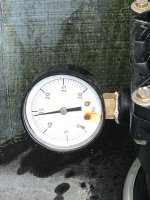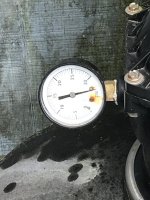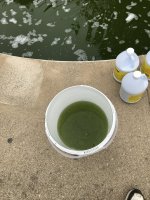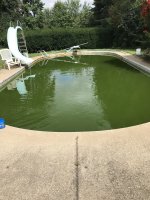My wife & I went over & saw the pool today. She needs a new weir door & pressure gauge. We put a hose over the return and filled a bucket about 2/3 full of filtered water. As you can see it's almost as green as the water in the pool. The filter is a Tagelus TA60 sand filter. I tried to get a look at the sand but the waste line is pvc without a union.
Below is the pressure gauge with pump off followed by pump on.


Here's a picture of a pail of water from the return after filtering.

Below is the pressure gauge with pump off followed by pump on.


Here's a picture of a pail of water from the return after filtering.



